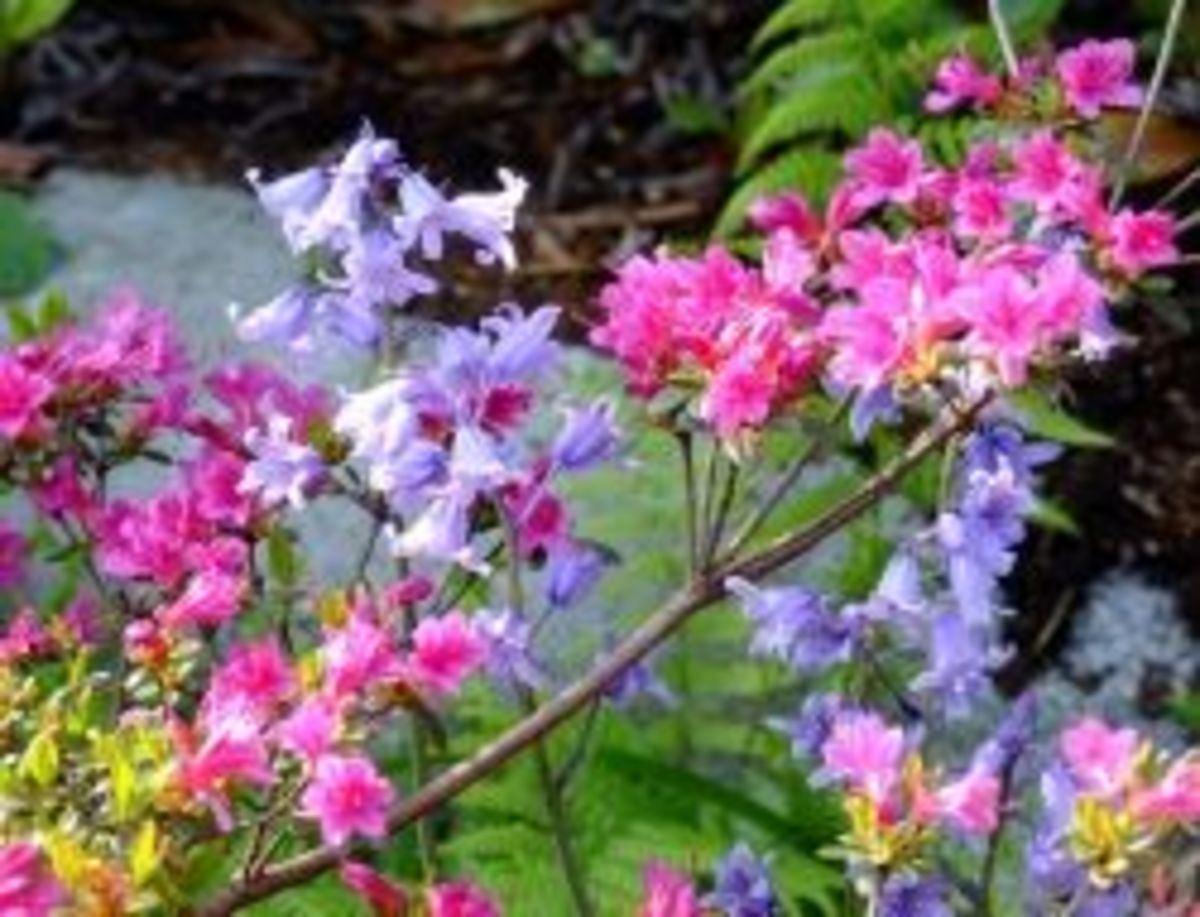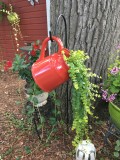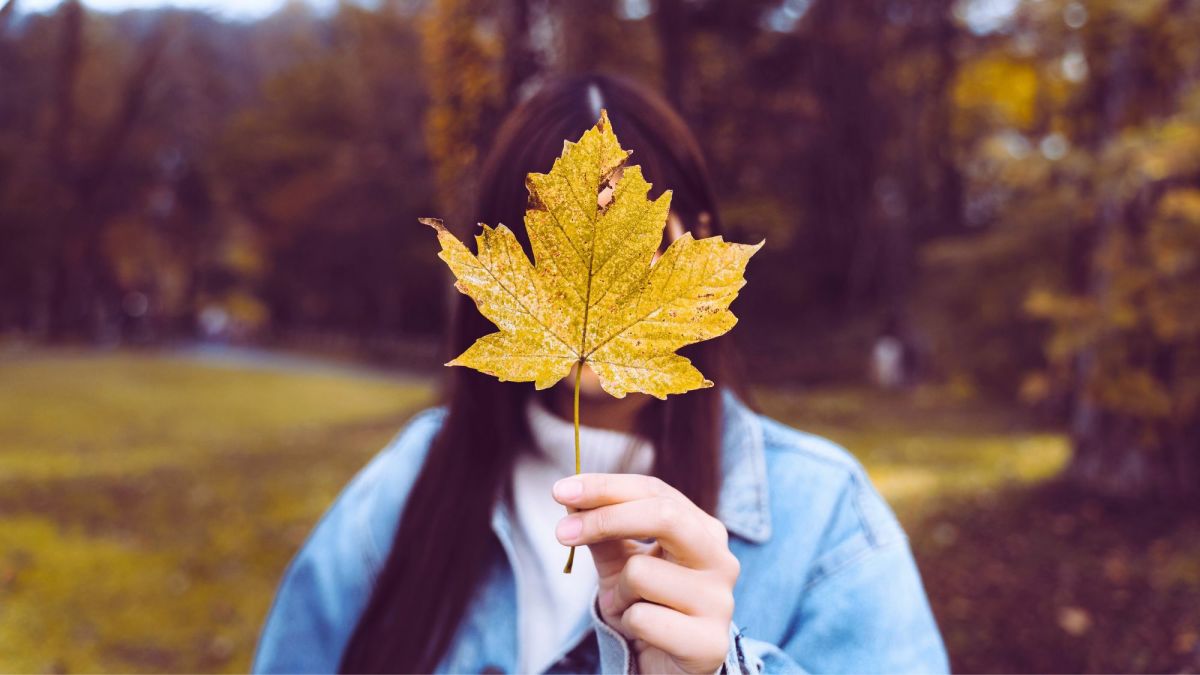Money Saving Gardening Tips - Part 2
My Back Garden
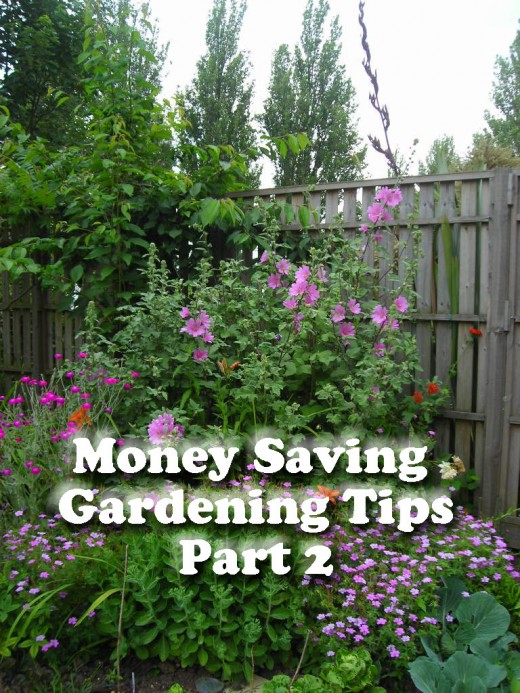
Part 2 of Money Saving Gardening Tips--Numbers 7 to 12
(See the full list of tips below this section)
If you have ever wondered how you can still have a beautiful garden without spending a lot of money, you will find these tips very useful. You might not want to use all of them, but I'm sure you'll find something helpful here.
In this web page, which is Part 2 of my series about money-saving gardening tips, you will find lots more suggestions for how to save money and do some recycling when doing your garden. Some of the advice about frugal living you might like more and some less, but I am sure you will end up thinking more about recycling, and will use some of the thrifty gardening advice.
In particular, you might find the community ideas rather fun - I do. Or you might like to join the Debate, or just enjoy these money saving ideas.
Here Is The Full List Of All Seventeen Money Saving Gardening Tips:
- Use Plastic Bottles as Cloches to Protect against Weather and Predators
- Use Small Plastic Pots with Lids as Slug Traps for your Garden
- Collect Slugs and Snails by Hand
- Use Plastic boxes and containers as seed trays
- Make Your Own Stakes for the Garden
- Don't always Buy Your Plants from Nurseries
- Gather Seeds or Seed Heads from Your Own Plants
- Use large pie tins, such as Fray Bentos Steak and Kidney Pie as Plant Saucers
- Improvise with unwanted furnishings as Plant Racks
- Get free Plastic Pots and Gardening Implements from Freecycle - lots of people give these things away
- Join Seedswop or start a plant and cutting exchange yourself
- Learn How to Take Cuttings of Plants and other Propagation Methods
- Re-Use Plant Pots and Plant Ties
- Make a Vegetable Plot
- Make use of Unusual Containers for Container Gardening
- If your Garden Backs on to Vacant Land, Use Both Sides of the Boundary Fence
- Use Logs for Garden Seating and Dividers
Collect Your Own Garden Seeds
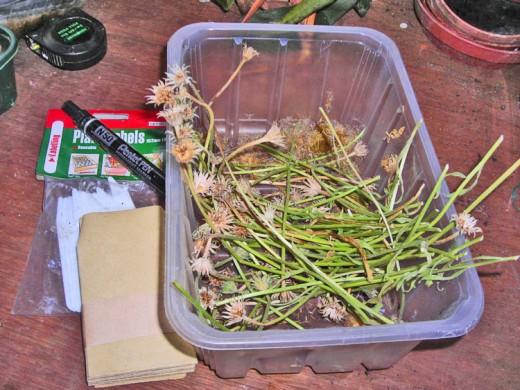
Money-Saving Gardening Tip #7 -
Collect Your Own Garden Seeds
Gather Seeds or Seed Heads from Your Own Plants
You can use them yourself to grow you own plants, and also swop them with other gardeners for some of their seeds
Buy yourself a packet of small brown wage-slip envelopes from any stationers. They are an ideal size for storing seeds.
Keep a pen handy, so that you can label the envelopes as soon as you put the seeds in them, to avoid confusion when you can't remember what seeds went in which envelope.
Put the name of the plant, the date when you collected them, and possibly a bit about where they like to grow - sun or shade, front or back of border, colour, and when they flower. The date helps so that you know how long you have stored them, and whether you need to replace old seeds with new ones if they have not been used after a couple of years. The other details are partly for your own knowledge, but also to help other people to whom you might give spare seeds.
Gardeners love to swop seeds.
Use Pie Tins as Flower Pot Saucers
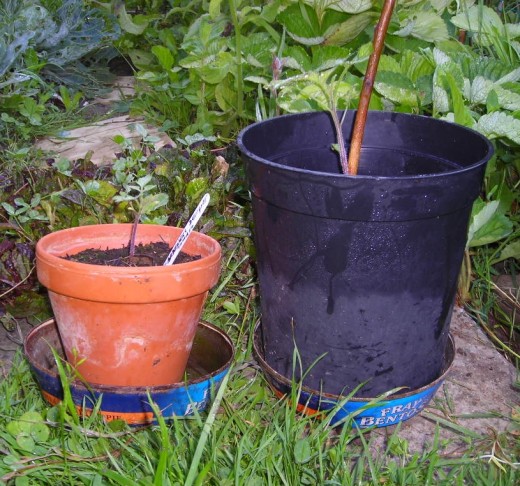
8 Money-Saving Gardening Tip #8 -
Use large pie tins as Plant Saucers
Recycle large pie tins, such as Fray Bentos Steak and Kidney Pie as Plant Saucers
You need to stand plant pots in saucers, because this helps them to drain without completely drying out.
Washed shallow tins make ideal saucers in which to stand your pots - if you have a lot of pot plants it can be quite expensive if you have to buy your saucers. Obviously the tins are not so elegant, and you might not want to use them indoors, but they are fine in the garden or potting shed.
If you are a bit fussy, you could always paint them.
Even in the garden, you may not want the pie tin saucers on show, but quite often flower pots can be judiciously placed in such a way that the tins in which they are standing are not actually visible, for instance if they are behind other pots, or hidden by grass or other plants in the garden.
Improvised Plant Shelves Using Old Vegetable Rack
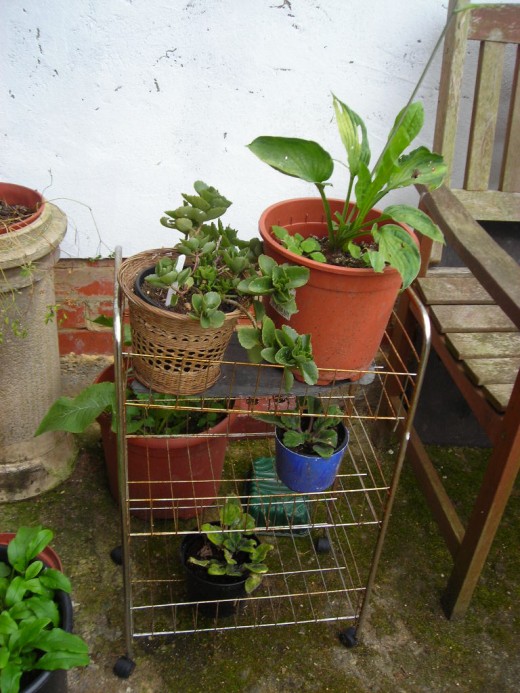
Money-Saving Gardening Tip #9
Recycle an old vegetable rack, or a computer trolley as a plant rack. Or you could use an old television stand or shelving - just use your imagination and improvise.
If you need to protect the plants from predators, or If the weather is cold, you could even turn the vegetable rack into a mini greenhouse - by draping plastic sheeting over it to protect the plants, and then removing it, or opening part of it, when the weather gets warmer.
You could even use a large polythene bag, such as a bag from the cleaners. Or if you have a spare piece of plastic or perspex sheeting, you can stand that up against the rack, and then you just need to cover with polythene whatever is left exposed.
If the rack has wheels, you could move it around easily to follow the sun .
Freecycle Logo
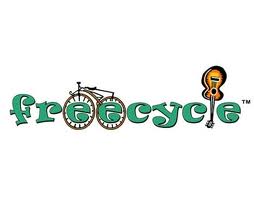
Money Saving Gardening Tips #10 -
Get free Plastic Pots and Gardening Implements from Freecycle - Lots of people give these things away
You can get all sorts of things from Freecycle - a website where people can advertise their offers and wants. The idea is to save things being thrown away if they can be recycled, and keep them out of landfill as long as possible.
The important thing is that everything is free - It doesn't matter whether people are acquiring things for their own use or to re-sell - the moderators and other members are on to you like a shot if you offer something whilst asking for any kind of payment or swop. As they point out, the website is not a swop shop - Its purpose is to provide a forum where you can give away things that you don't want.
I've been a member for several years and really enjoy it. People love to accept my surplus plants, and I much prefer them to go to a good home than go on the rubbish heap.
This is what Freecycle: say about themselves:
"Welcome! The Freecycle Network is made up of 4,834 groups with 7,341,000 members across the globe. It's a grassroots and entirely nonprofit movement of people who are giving (& getting) stuff for free in their own towns. It's all about reuse and keeping good stuff out of landfills. Each local group is moderated by a local volunteer (them's good people). Membership is free. Have fun!"
Join a Seed Swap Group
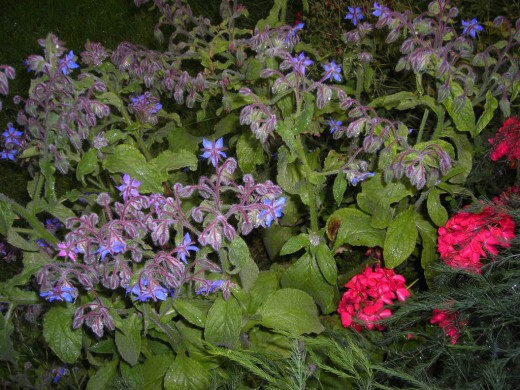
Money Saving Garden Tip #11 -
Join Seedswop or start a plant and cutting exchange yourself
There are quite a few clubs and websites for people who want to exchange seeds and plants. Some of them are purely web-based, and people actually send the things to each other, whereas some are more community-based, and people actually meet up to exchange things in person.
See what you can find in your own area, or you could even start up a group yourself, by advertising in a local newsagents, newspaper, or community building such as a library, college, friendly shop or even a health centre.
or there are cashless exchange and trading systems such as Community Exchange System. This organization started in South Africa, but there are now thriving groups all over the world. I am a member too.
This is what Community Exchange System say about themselves:
"With the impending implosion of the usury-based, global money system, now is the time to seek a new way of 'doing' money, one not based on debt and controlled by a global monetary elite that seems happy about destroying our planet in the pursuit of profit.
Conventional money is created as debt by private financial institutions for their own profit-making purposes, not as a public service. This is the root cause of the economic, social and environmental problems that beset us. The amount of debt determines the quantity of money, which has nothing to do with the amount of money we need to live decent lives.
CES money is 'created' by its users so it can never be in short supply. So long as you can offer something of value you can have from the community goods and services of like value.
Join the growing community who have discovered a new way of 'doing' money, a healthy money that will create a healthy society"
Take Cuttings Using Rooting Hormone
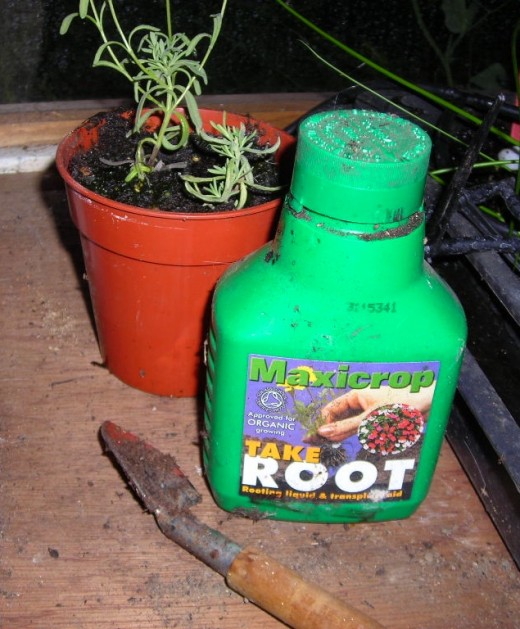
Money-Saving Gardening Tip #12
Take Plant Cuttings Using Rooting Hormone
It's great to be able to go to a garden centre and buy all your plants, but growing your own plants and seedlings is very satisfying and rewarding. And it doesn't cost anything except for a small amount of rooting hormone (plants take better if you dip them in rooting hormone, which safeguards them against disease and fungus).
It's quite easy to grow slightly woody plants like lavender, grape vines and even roses from cuttings. Choose fairly short stems that have not borne flowers or fruit. Cut or tear them off the main plant, leaving a little heel if possible. Dip the stem in rooting hormone, then insert it into potting compost in a flower pot to a depth of about 2 inches, watering it well for a few days, and later watering it a couple of times a week. You can also grow softer stemmed plants like pentstemons in this way - mine were very successful this year.
You can also propagate plants by layering - to do this, bend a fairly flexible branch or stem untiulk it touches the earth. Then peg it down - you can use a hairgrip, forked stick, or anything that will anchor the plant to the ground without harming it. Then cover it with earth, water the plant from time to time, and if you just leave it for a few weeks or months and forget about it, the pegged-down shoot will gradually develop its own root system, and you can then cut it away from the parent plant. This works well for plants such as heather and periwinkle (those are the ones I have tried successfully).
Grow more plants than you actually need - then swop them for other people's plants.
;
Use this List of Money Saving Hints For Your Garden -
They are really simple tips, using every-day articles you have around the home
Tips 1 - 6 are on Money Saving Gardening Tips
Tips 7 - 12 are on this page
and Tips 13 - 17 are on More Money Saving Tips
Pentstemon and Sweet Peas
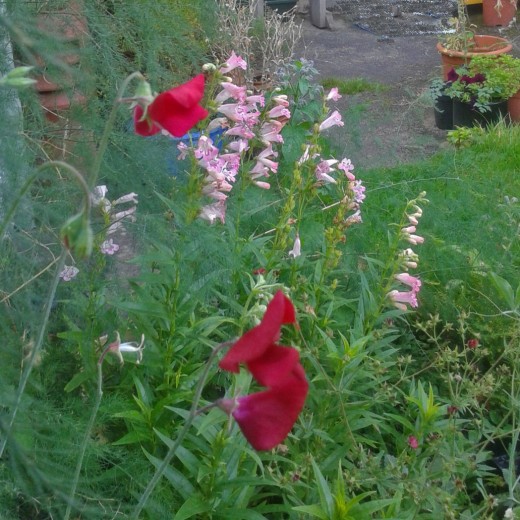
Will You Be Trying Any of These Thrifty Tips? - Or Do You Think They're a Waste of Time and Effort?
Some people like to use a bit of ingenuity to save money, and others just like to get on with the job in hand without much thought of saving money or recycling.
How do you measure up against the other people taking this poll?
Will you be using any of these tips and ideas?
This Is My Favourite Gardening Tool - A Dibber For Digging Out Weeds
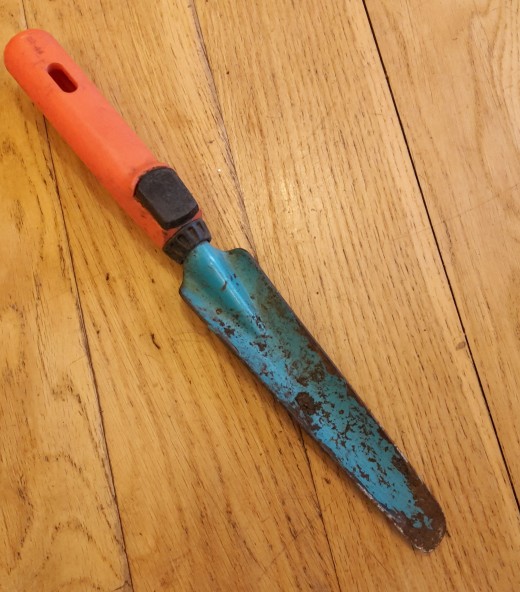
A Gardena Gardening Set - I Own 3 Of These Tools And They Are Very Hard-Wearing

Here's a poll to see who has the green fingers in your household - As you are reading this page, I am assuming that you do have an interest in gardening
That's two polls on one page - aren't you lucky?
Who is the main gardener in your household?
White Osteosperm Greeting Card
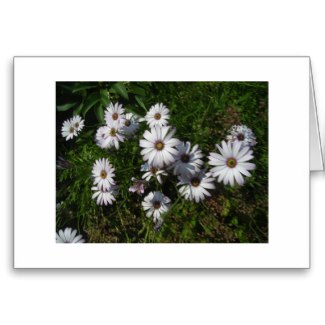
A Popular YouTube Video About Re-Using Soil Which Will Save You Money
© 2010 Diana Grant



